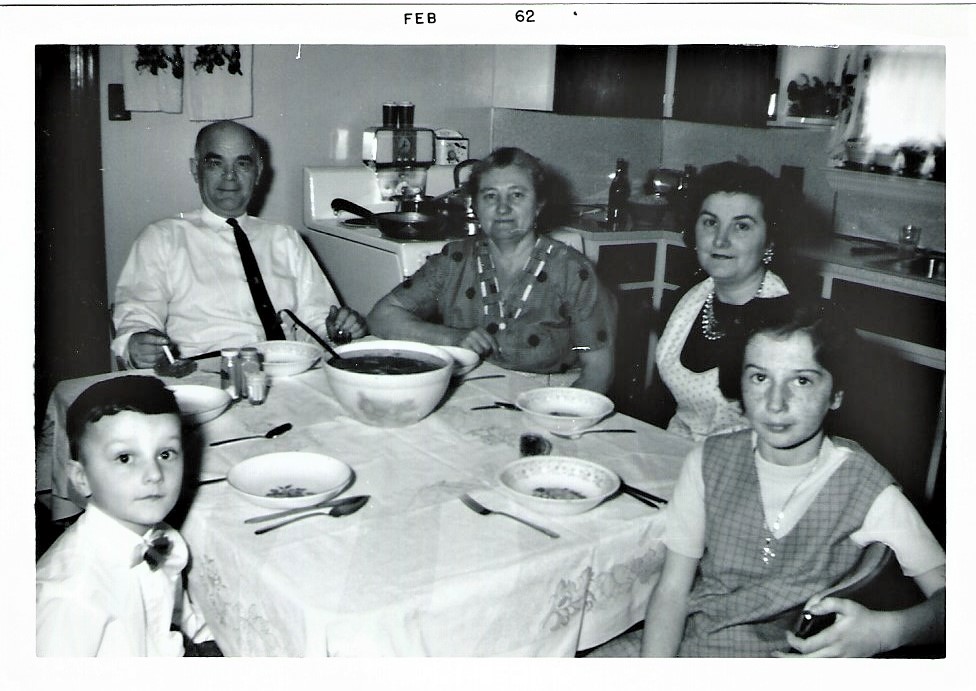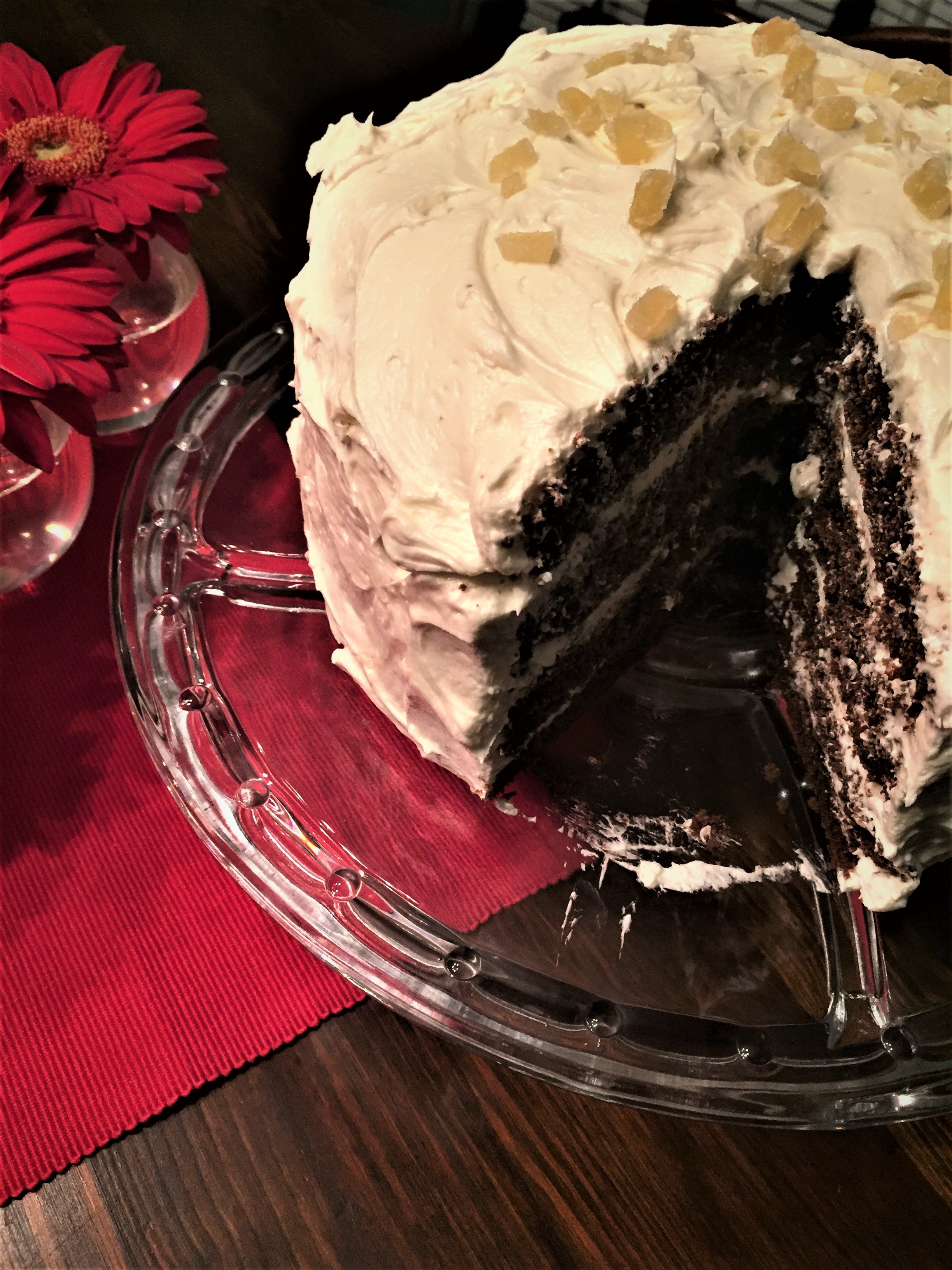Recently, something triggered this childhood memory.
At the conclusion of family meals, we had to ask to be excused from the table - something like - “May I please be excused?” I find that to be so odd. It was a blue collar family with no aspirations to be anything more, so what was that table manner ritual all about? Was it simple decency or “hoity-toity”?
You could scold me for implying that good manners are linked to family income or social status (more on that later). In other respects, there was no “hoit” or “toit”. The dining table was in the kitchen, covered with a plastic table cloth. We used everyday dishes and cutlery, and always carefully placed the Tupperware salt and pepper shakers where elders could easily reach them. (There were, of course, nicer tablecloths, and crystal salt and pepper shakers for special occasions.)
Surely I must have got an A+ on this!
In other respects, I don’t recall a table manners “curriculum”, as in “elbows off the table, no slouching, no leaning back in your chair, don’t chew with your mouth open, don’t talk with your mouthful, don’t gang-plank your knife, wait for others before starting…” Oddly, since this list comes from memory and not research, someone must have been drumming that into me.
Perhaps the “drummers” were my home economics teachers? It was there, after all, that I learned how to set a table.
Again, where did this stuff come from? Fortunately, some culinary historians have tackled the history of table manners and claim that the Industrial Revolution (1760-1840), the emergence of a middle class, and the Victorian Era were responsible for the more widespread adoption of manners that might previously have been observed only in high society [Source].
There is also some claim that learning table manners was indeed "hoity-toity" and linked to optimizing performance ratings if one had opportunities for social climbing. Not so hard to believe. "Pygmalion" (the inspiration for '"My Fair Lady") may have been published back in 1913, but even today image consultants have plenty of clients. (One story line in China Rich Girlfriend focuses on a "disruptive" being coached to fit into Hong Kong high society!) As always, manners are part of the game, unless you have enough charm or other assets to get away with being a disruptor.
Another viewpoint was that the teaching of social graces had less to do with upward mobility and more to do with “democratic levelling”. Etiquette “books had always been popular in America: the country’s exotic mix of immigrants and newly rich were eager to fit in with the establishment. Men had to be taught not to blow their noses into their hands or to spit tobacco onto ladies’ backs. Arthur M. Schlesinger, who wrote 'Learning How to Behave: A Historical Study of American Etiquette Books' in 1946, said that etiquette books were part of 'the leveling-up process of democracy,' an attempt to resolve the conflict between the democratic ideal and the reality of class.” Crikey! A bit of a powder keg if we start to unpack that. [Source]
In my family, growing up, we did at least eat together. When I emptied my parents’ house last year there were three sets of TV tables, but during the time I lived in that house they were seldom used for family eating in front of the TV. My mother would never buy us TV Dinners. I am aware that, today, families may struggle to eat together. Kids may come and go from the table and even when remaining at the table, digital distractions often result in people “virtually leaving”.
I (lovingly and respectfully) ponder that being held hostage at the dinner table might also have been an exercise in old-fashioned parental power. A daily reminder of “who’s the boss”. You leave the table when I say so, you thank your mother (yes, always the mother) for dinner, and even if you momentarily escape to another room, you come quickly back to clear the table and do the dishes.
Social graces, respectful civility and a power play all in one.
Will have to quiz my own kids about their dinner time etiquette memories :-))
No etiquette book surfaced when I emptied my parents’ house, so where my parents sourced the “manners curriculum” remains a puzzle. Today you need only search on “table manners children” and you’ll get over 2 million results!
One source is from the Emily Post site. She wrote an etiquette book way back in 1922 and for decades after promoted the topic, speaking on radio programs and writing newspaper columns. The Emily Post Institute continues to this day offering their version of the top thirteen table manners for kiddies.
Wade through those internet search results and you can make that list of manners even longer! And/or read this brief, fascinating history of table manners.
A counter-point to asking to leave the table is asking to join the table. I recently enjoyed a podcast about journalist Jane Cunningham Croly who in 1868 was not permitted to attend a dinner honouring Charles Dickens. Why? Because women were not permitted to dine publicly unless they were in the company of a man. The setting was the famous NYC restaurant Delmonico’s - established in 1837 and still open today. They offered to let her into the room if she agreed to dine behind a curtain. She did not. What she did do was to found a women’s club and convinced Delmonico’s to host their meetings. [More on this story...]
This past April 2018, a luncheon of 150 women marked the 150th anniversary of that event. [Use your favourite tool to find and listen to that podcast - "A Taste of the Past", April 20, 2018; episode #297.]
Before closing, I invite you to use the Comments Tool below to share your past or present table manners stories!
Let’s end this blogpost with a recipe as usual. Every mannerly dinner should end with dessert and lately I have been craving cake with icing. Here are my three favourite options – which one shall I choose?
Do you have an iced cake recipe you’d like to recommend?
P.S. Permit me to add a sad postscript about other types of leaving. Anthony Bourdain has also excused himself from the table. Had he asked our permission, the answer would have been a resounding no.




